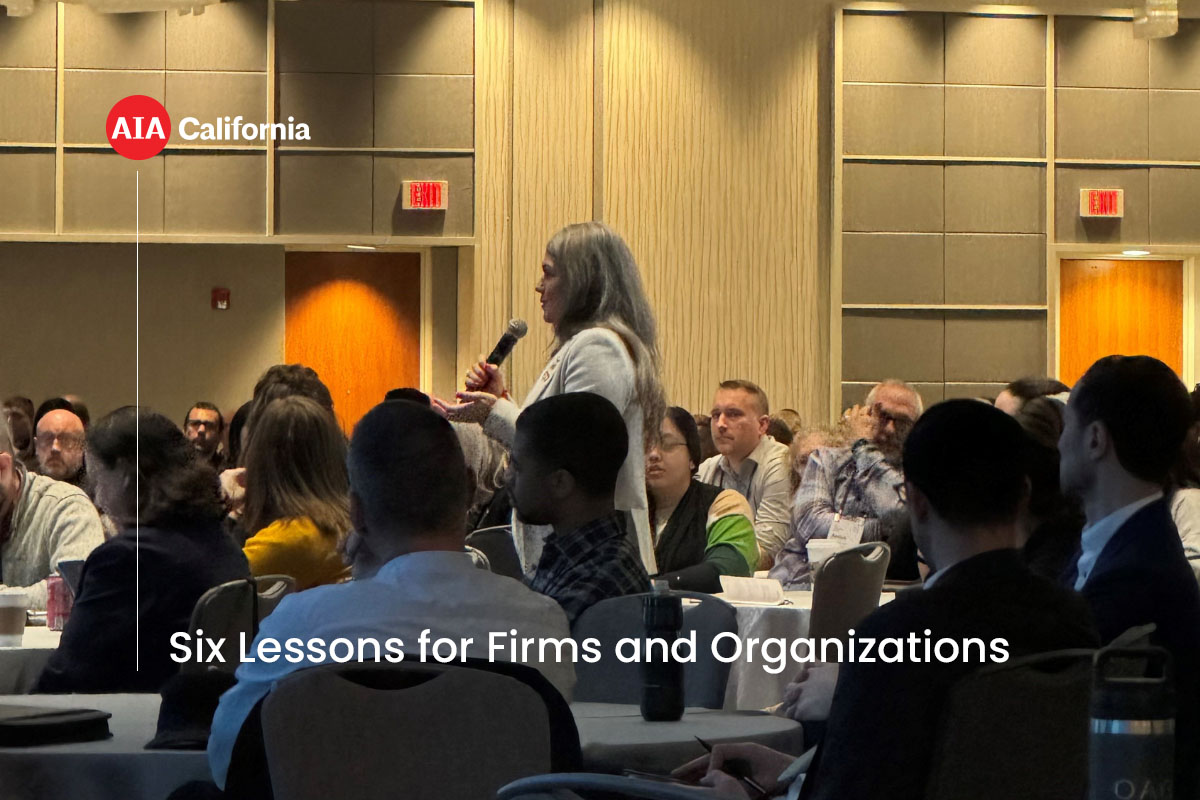
Participation in an association like AIA is the “amplification of a human commitment”; a group of professionals working together to address common issues. It serves as a forum for a free and open discussion of diverse opinions and amplifies the work of individuals.
Last week’s AIA Leadership Summit is a program rife with examples of organizational advantages.
Evelyn Lee, FAIA, AIA President-elect from California congratulated over 650 attendees for stepping up and showing up for the industry this week in Washington D.C. She recognized the power of voices – united and inspired by each other. Together, AIA leaders advocated for issues on Capitol Hill including: Democracy in Design, R&D Tax Credit, and raising the cap on architectural fees for federal projects.
For the 60+ Californians in attendance, this notion of community was reinforced throughout conference. AIA California President Winston Thorne, AIA, gathered the community of California’s leaders and invited them to share their top efforts in support of the profession. Many components are focused on tangible programs to support emerging professionals, others are looking for strategies to support the business of architecture – all working together to improve the health and prosperity of the profession in California.
Six lessons from this event that directly translate to practice…